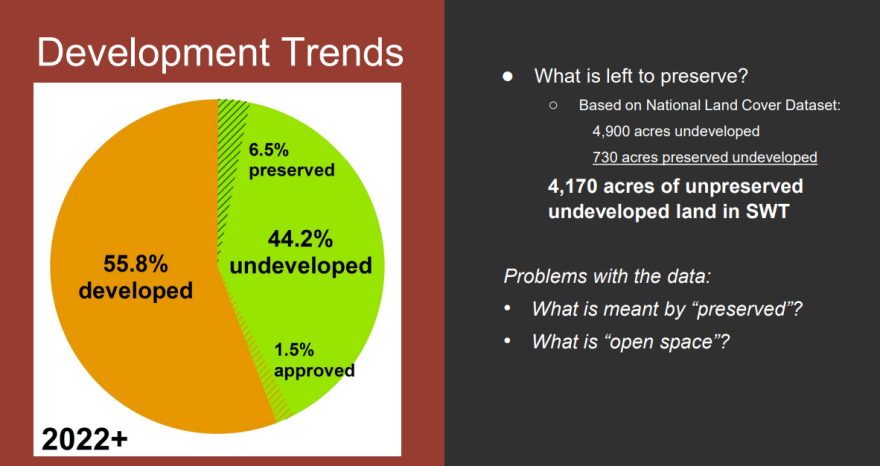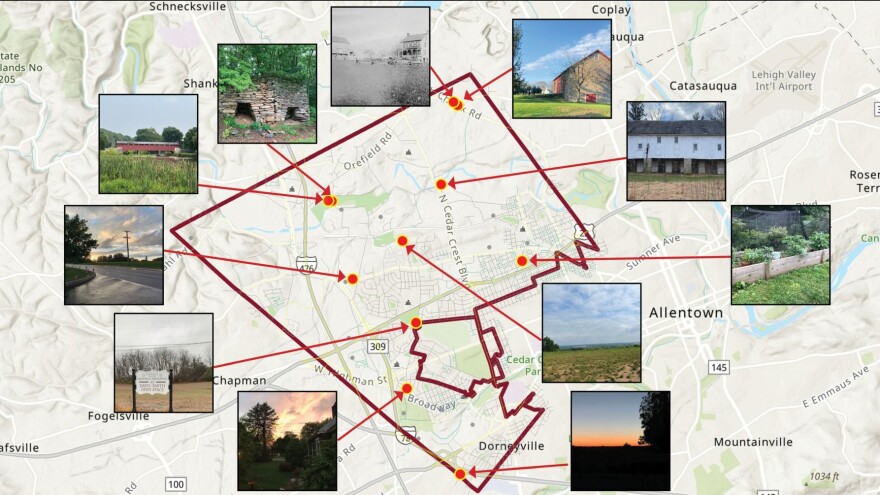- South Whitehall Township hosted a wrap-up meeting for "South Whitehall Landscapes," a plan guiding preservation efforts in the township
- Several potential actions were identified, including classifying the township’s historic features, amending land use laws and discussing an open space tax
- A final version of the plan will come before the township Board of Commissioners for approval
SOUTH WHITEHALL TWP., Pa. — A plan to preserve natural resources, historic buildings and farmland in South Whitehall is nearing completion.
The township held a wrap-up meeting for "South Whitehall Landscapes," a plan that will be the township’s guide to landscape preservation, including preserving open space, historic spaces, as well as agricultural and natural resources.
Township staff identified several potential action items at the meeting, including classifying the township’s historic features, amending land use laws and discussing an open space tax.
“Having a historic structure in the context of agricultural fields or a natural area around a structure is really something that we wanted to focus on and look at holistically as opposed to just resource-specific."Community Development Director David Manhardt
Community Development Director David Manhardt said the plan focuses on many different types of resources because they all can come together to form a cohesive landscape.
“Having a historic structure in the context of agricultural fields or a natural area around a structure is really something that we wanted to focus on and look at holistically as opposed to just resource-specific,” Mandhardt said.
Long-range planner Chris Strohler said the benefits of the plan go beyond the individual assets that will be preserved.
“It's not just about the physical features. It's also about the stories and the culture and the legacy and preserving the heritage of this area,” Strohler said.
South Whitehall Landscapes was born out of South Whitehall’s Comprehensive Plan, which was adopted in March. It listed resource protection as a high priority.
To get resident feedback for the plan, the township had a photo survey that asked participants to share pictures of their favorite places in South Whitehall.
The township also held three meetings in August about more specific topics: agricultural resources, natural resources and historic resources. Each featured subject matter experts from the region who discussed what paths the township could take.
A final version of the plan will come before the South Whitehall Board of Commissioners for approval.
What resources does the township have?
As of 2022, South Whitehall had 4,900 acres of undeveloped land, which is 44.2% of the total land, according to a presentation given by Strohler and Manhardt at the meeting.
Of that land, 730 acres have been preserved and 4,170 acres have not. “Preserved” land is land that will remain undeveloped due to a specific action or regulation.

The township has 2,300 acres of active farmland. It also has 1,500 acres of woodlands, 1,100 acres of steep slopes and 800 acres of riparian areas, or land that borders a body of water.
As for historic features, the township has four listed on the National Register of Historic Places, five that are eligible and more than 70 identified for further investigation.
Open Space and Historic Preservation Consultant Jeffrey Marshall, who worked with the township during the plan's creation, said some buildings can be related to history but not important to a specific point in history.
Marshall recommended the township have a tiered set of restrictions for buildings, depending on their significance.
Next steps
The presentation laid out potential action items the township could take to preserve these resources.
Priority goals included classifying the township’s historic features, amending township zoning ordinances and discussing an open space tax.
An open space tax would be levied if township residents voted by referendum to increase the earned income tax to fund open space preservation. The funds raised could be used to acquire, preserve and maintain open space.
“We have to always remember, first and foremost, that everyone who has property rights has that right to develop."Long-range planner Chris Strohler
Another priority goal was adopting historic preservation ordinances, which could regulate the demolition, alteration and addition of historic structures. The township could also adopt similar ordinances that would require developers to preserve and maintain natural resources.
In addition to the priority goals, Strohler outlined several different types of agreements the township can make with property owners to preserve land, such as easements and deed restrictions. However, he emphasized that these agreements are voluntary.
“We have to always remember, first and foremost, that everyone who has property rights has that right to develop,” Strohler said.
Strohler said South Whitehall could have a historical society, which would be an independent group not directly affiliated with the township, or a historical commission, which would be part of the township’s operations. But both would have to be citizen-driven efforts.
“It's something that we would like to see happen, but certainly there has to be the interest there from the community in order to initiate something like this,” Strohler said.
Mandhardt said township staff will discuss these recommendations with the township Board of Commissioners


